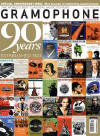Texte paru dans: / Appeared in:
*

GRAMOPHONE (04/2013)
Pour s'abonner /
Subscription information
Linn CKD434

Code-barres / Barcode : 0691062043427
Reviewer: Julie
Anne Sadie
Trip to the French
countryside for Huggett’s Trio Sonnerie
After issuing a series of fine recordings of French music in the 1980s and
early ’90s, Trio Sonnerie make a welcome return with chamber music by the
two greatest exponents of the bass viol, Marais and Forqueray. This is the
first recording in a long time to include all three of the morceaux de
simphonie scored for violin, bass viol and harpsichord that Marais published
in 1723.
La gamme is Marais’s instrumental chamber version of an opera, based on an ascending harmonic scale and employing a succession of tempi, ensemble textures and forms, linked together by skilfully wrought transitions. Monica Huggett loses no time in asserting the brilliance of the violin, then fashionable in Paris, over the bass viol, played here in subdued fashion by Emilia Benjamin. The viol player has several roles to play in each of Marais’s morceaux (doubling the continuo line, performing bass obbligatos, and as a soloist and trio partner), requiring both alertness to the changing roles (when to blend and when to emerge) and, ideally, the same sort of playful panache that characterises Huggett’s playing. In the ‘Sonate à la marésienne’, Huggett leads the others in a merry dance, engaging in dialogues, exquisitely characterising the sequences and savouring the petite reprises. It is here that Huggett’s deep familiarity with and command of 17th- and early 18th-century chamber music shines through.
The suite by Antoine Forqueray that follows was published in two editions (1747), for bass viol and continuo and for solo harpsichord. Trio Sonnerie give us a taste of each version. Harpsichordist James Johnstone puts his own stamp on the opening Allemande, ‘La Laborde’, deliciously hypnotises us with the Couperinesque ‘La Bellmont’ and exercises his right to silence in ‘La portugaise’, but throughout I couldn’t help wishing for a harpsichord with a more sparkling treble and resonant bass. Benjamin, a fine player, takes expressive liberties with the tempo in both ‘La Forqueray’ and ‘La Cottin’ (marked sans lenteur), and in ‘La Couperin’ might have created greater dramatic tension between treble and bass ranges. So, finally, to the work that inspired the ensemble’s name: Marais’s Sonnerie de Sainte-Geneviève du Mont de Paris. In so many ways this is a delightful performance, though again the mellowness of the viol range and timbre often fail to compete effectively with the brilliance of the violin. Plus ça change.
Cliquez l'un ou l'autre
bouton pour découvrir bien d'autres critiques de CD
Click either button for many other reviews


